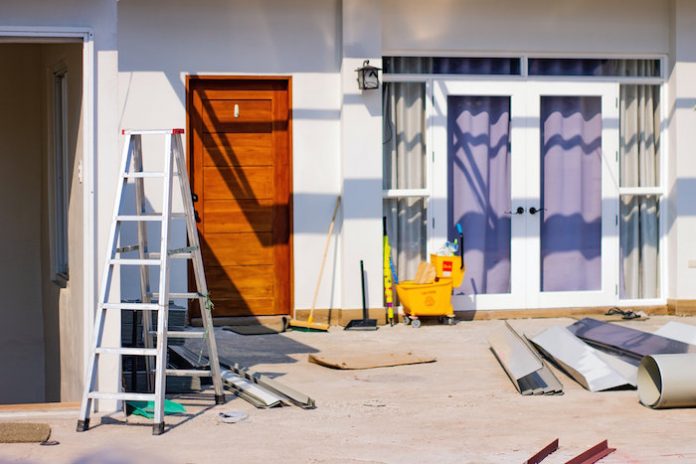How you use your living space can be greatly impacted by small house extensions. Irrespective of budget, a strategic addition to your home can change the outlook of your small dining area and make it a more functional room for you.
If you are creative about it, you might even get a home office with small house extensions. Besides the creation of more space, extensions can improve natural light, connect rooms within the home, and modify the overall design to make it more physically appealing.
It could be a porch, a small single-story extension, a modest loft extension, or a side return extension. Whichever you choose, you will be enhancing your living space while adding value to the whole property if you get it right.
This guide has been documented to assist you with all information necessary for commencing and carrying out a successful extension.
Small House Extensions at the Back
The general outlook of your property can be revamped with the addition of a single story extension at the back of your property. This extension can enlarge your kitchen, dining room, or living space.
You might have your kitchen across the back of your house extended 2m out into the garden. Afterward, you build a partition wall at the back end of the original kitchen, which creates a 1-2m deep room in the center of the house. It could be small and probably dark, but this small space could be your utility or cloakroom. Your kitchen will now lie in the garden part of the original room with the new space you created.
To improve the general outlook and retain more brightness in the kitchen, you can put some roof lights on the roof of the small extension. You will also have a less cluttered kitchen, since you now have a utility room that helps you free up some space in your kitchen.
Cost of a Single-Story Extension
The addition of a single-story extension is a creative way of adding extra space to your property. Whether this is something you have imagined for a while or you are forced to adjust the layout of your property due to the pandemic, it is a worthwhile undertaking.
With a single-story extension, you can transform the ground-floor of your home with the addition of a utility room, open-plan kitchen space, or a home office. This is a more budget-friendly option than moving homes. You can add roof lights and bi-fold doors with the extension, which helps to improve natural light inside the home.
The cost of an extension can be broken down in diverse ways, but you can view rough estimates below and use the cost guides on My Job Quote.
The cost of building often depends on what you aim to achieve at the end. For your single-story extension, prepare to pay about £1,500 to £1,900 per square meter for a basic quality job, a good quality job will cost £1,900 to £2,200 per square meter, while the best quality job could cost around £2,200 to £2,400 per square meter.
The above estimate means that the build cost for the average single-story extension (4m x 5m) would be £30,000 and above for basic quality; good quality will cost £38,000 and above, and the best quality goes for around £44,000.
Note that the estimate above does not include the cost of interior fit-out and professional fees, all of which come in at around 10 to 15 percent and VAT at 20 percent.
With the cost of interior fit and professional fees added, the cost of a basic single story extension (4m x 5m) would run just below £40,000, while good to excellent quality will be pegged at about £58,000. Normally, costs won’t be the same all around the UK, as in places like London, the cost of extension will be considerably higher.
If you want to get an exact cost of a single-story extension, make use of our extension calculator.
It is important to note that you pay less for a single-story extension than you pay for a double-story extension, because a single-story extension doesn’t require a substantial foundation or as much steel-works as double-story extensions. Nevertheless, two-story extensions offer more per square meter, therefore you should choose wisely.
Cost of Planning Permission for a Single-Story Extension
In England, you have to pay a planning fee of £206 for a single-story extension (residential). A certificate of lawful development costs £103, while you also have to pay £34 (for each request) for discharging planning conditions.
Ensure you thoroughly examine your plans with an architect or builder conversant with the local planning authority and their regulations.
Below are other reports which might be required for a single-story extension;
- Tree report – usually costs £250 and above.
- Flood risk assessment in flood zones – costs £250 and above.
- Ecology report which may be required by your local authority – usually costs £400 but sometimes, much more.
- Archeological report if your property is located in an area of archeological interest. This might cost several thousand pounds.
- If your home is listed, you may have to get a historic building report.
Cost of Building Regulation for a Single-Story Extension
Building regulations approval is paramount for any extension you hope to carry out, as it is a necessity. Your proposed extension has to show compliance, which you can do when you tender a building control application to your local authority. Every authority has its unique list of charges, alternatively, you can decide to go with a private licensed Building Control company if you so desire.
Building regulations approval fees are often determined by the size of your proposed single-story extension. You should be prepared to pay £200 for 1 to 10 square meters, while between 80 and 100 square meters goes for £900. This is what you would need, whether you aim to get everything approved before you commence work or get a building notice application – in which case, you only need to give 48 hours’ notice before commencing.
Find a Home-Based Business to Start-Up >>> Hundreds of Business Listings.
















































